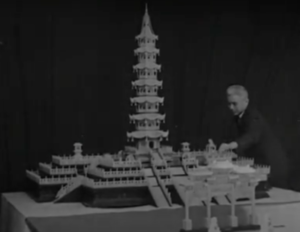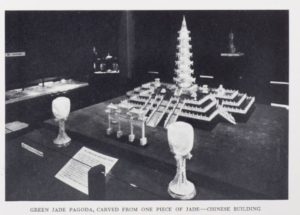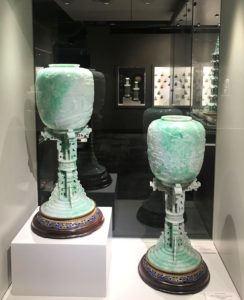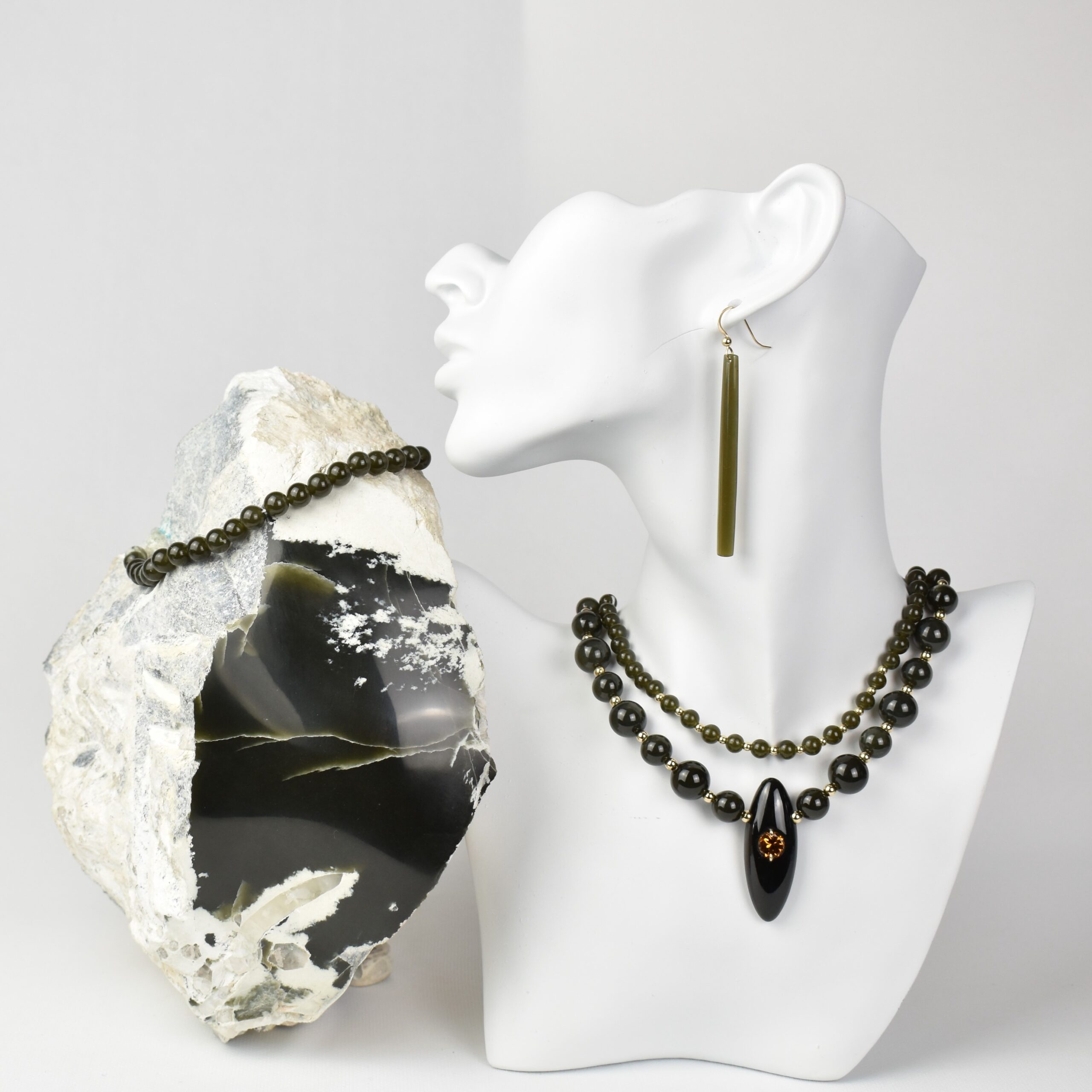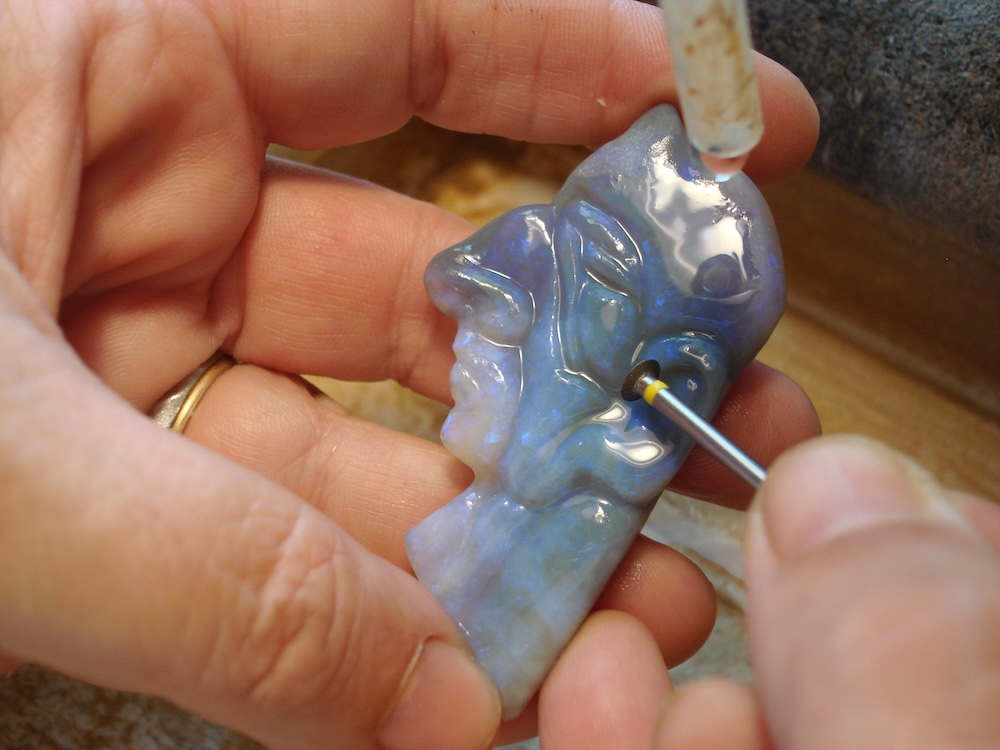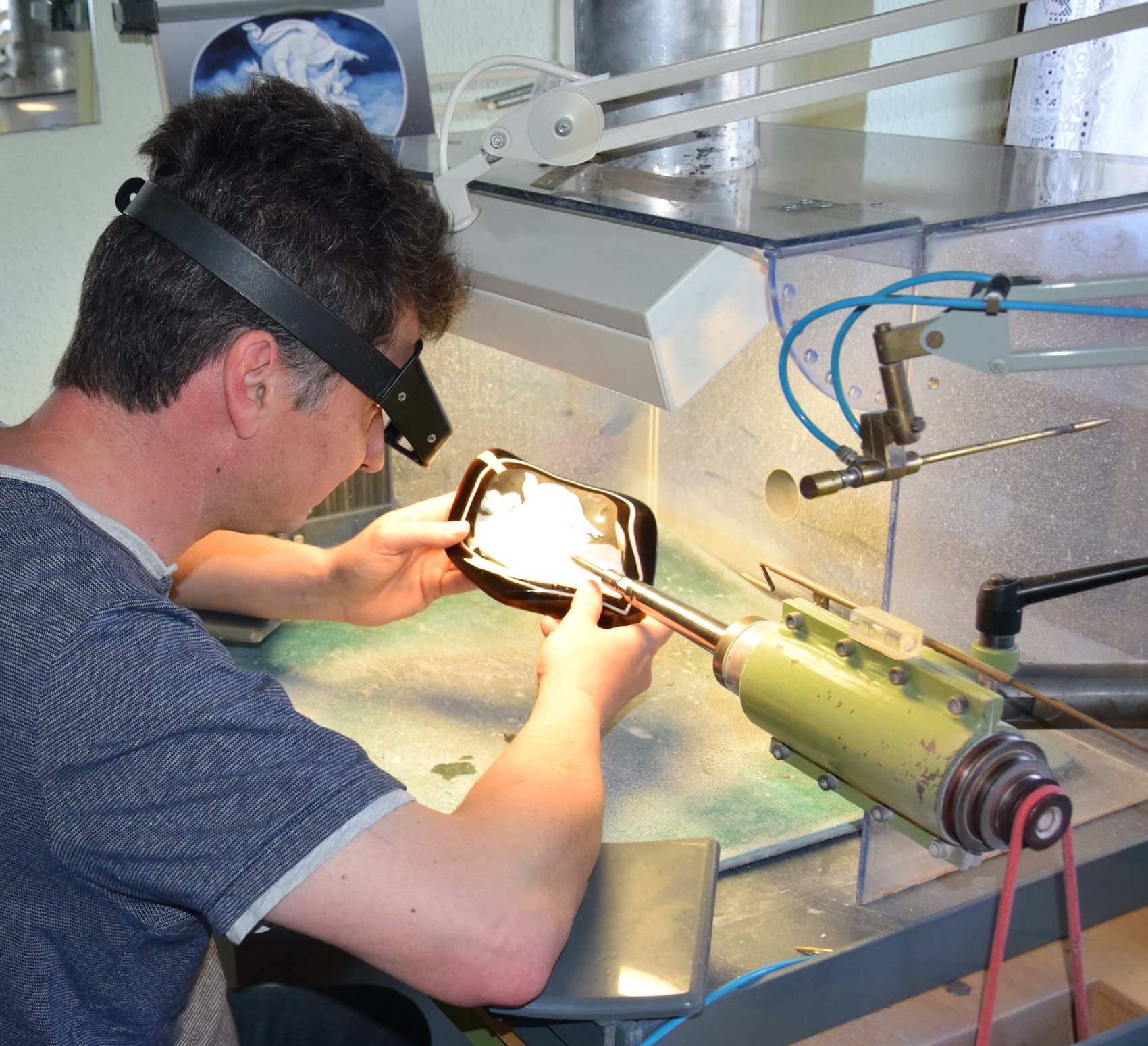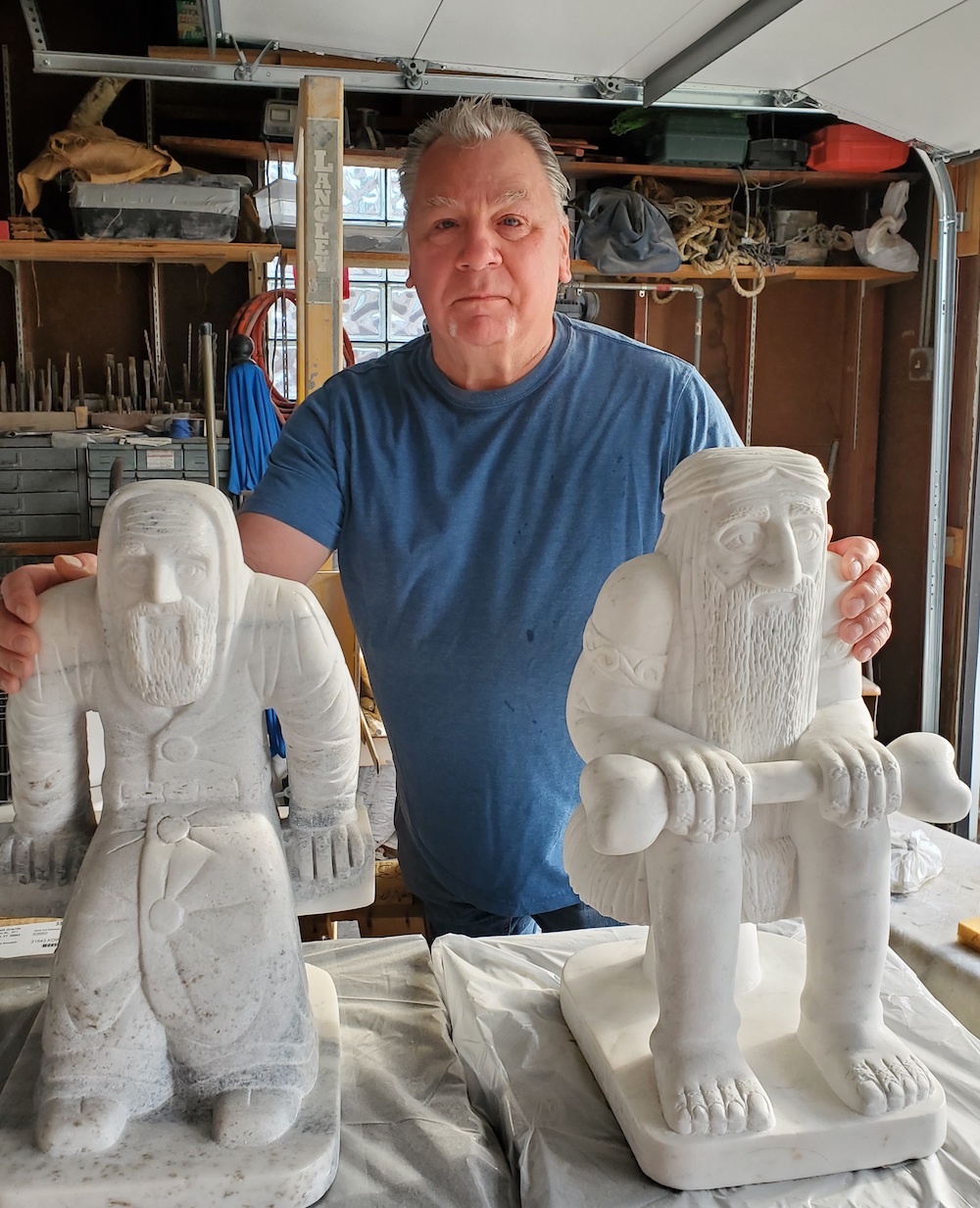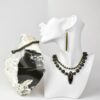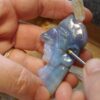The Altar of the Green Jade Pagoda has attracted and awed many visitors since the Museum re-opened last November. The largest jade carving outside China, it not only represents the greatest achievement of technical mastery and artistic sophistication of the six-thousand-year-long lapidary art tradition in China, but also has a very unique history itself.
Carved from a boulder of the finest jadeite found in north Burma (today’s Myanmar) in 1915, the structures took inspirations from the most symbolic and majestic architectures in China. For example, the pagoda is modeled after the 3rd-century Longhua Pagoda in Shanghai; the 3-tiered platform is an imitation of the terrace of the Hall of Supreme Harmony in the Forbidden City. The gateway, seen here being put together by Chang Wenti (right), is a miniature version of the ceremonial gateway at the Imperial Summer Palace in Beijing. It took 150 skilled craftsmen 10 years to finish this ambitious project, which embodies the lifelong passion and unprecedented vision of Chang Wenti (1886-1961), a 20th-century Chinese jade collector and dealer.
The Altar of the Green Jade Pagoda is 5-foot-tall and consists of more than 1000 intricately carved pieces. The video clip link (right) shows Chang Wenti carefully putting the pieces together for an exhibition at the Rockefeller Center in New York in 1933 after its debut at A Century of Progress World Exposition in Chicago earlier in 1933.
The Altar of the Green Jade Pagoda returned to Chicago and was exhibited again at the extended Chicago World Exposition in 1934. A photo of the exhibit (right) in the Chinese building at the World Exposition from the official guide book shows the Pagoda set displayed along with a pair of lamps. Carved from the same jadeite boulder as the pagoda set, this pair of exquisite lamps are currently on display at the Lizzadro Museum as well (right).
The Altar of the Green Jade Pagoda was a feature display at the Chicago World Exposition. As the Publicity Division of the Exposition noted, “Many visitors regard the Pagoda as one of the highlights of art at the Fair,” because of “its unprecedented size and quality of the jade; the grand and daring conception of its design, and the superb workmanship it incorporates.”
In 1939, the Altar of the Green Jade Pagoda was invited to attend the San Francisco Golden Gate International Exposition and was displayed at the China Village in 1939. Due to the outbreak of the Second World War, Chang Wenti and his Pagoda set stayed in the United States after the San Francisco Worlds Fair. The Pagoda set and the rest of Chang Wenti’s jade carvings traveled along the West Coast in the 1940s and 50s to help raise money for Chinese war orphans.
The Altar of the Green Jade Pagoda and some of Chang Wenti’s collection were donated to the Oakland Museum in California in 1968 and were gifted to Lizzadro Museum of Lapidary Art in 2018.

The Altar of the Green Jade Pagoda
Jadeite, 1923-1933
Chang Wenti Collection
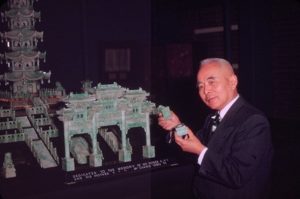
Photo courtesy of Lori Loo.
